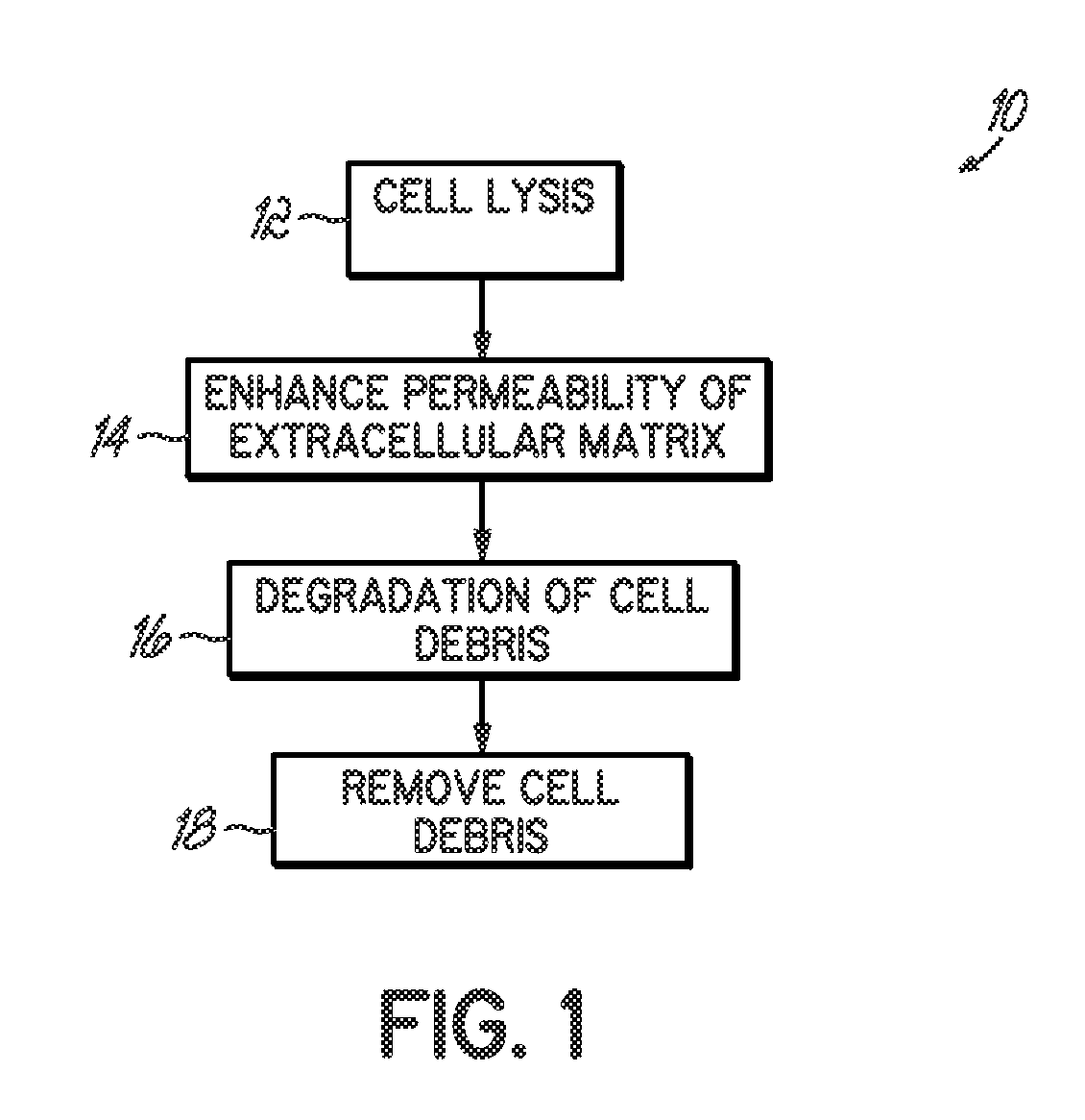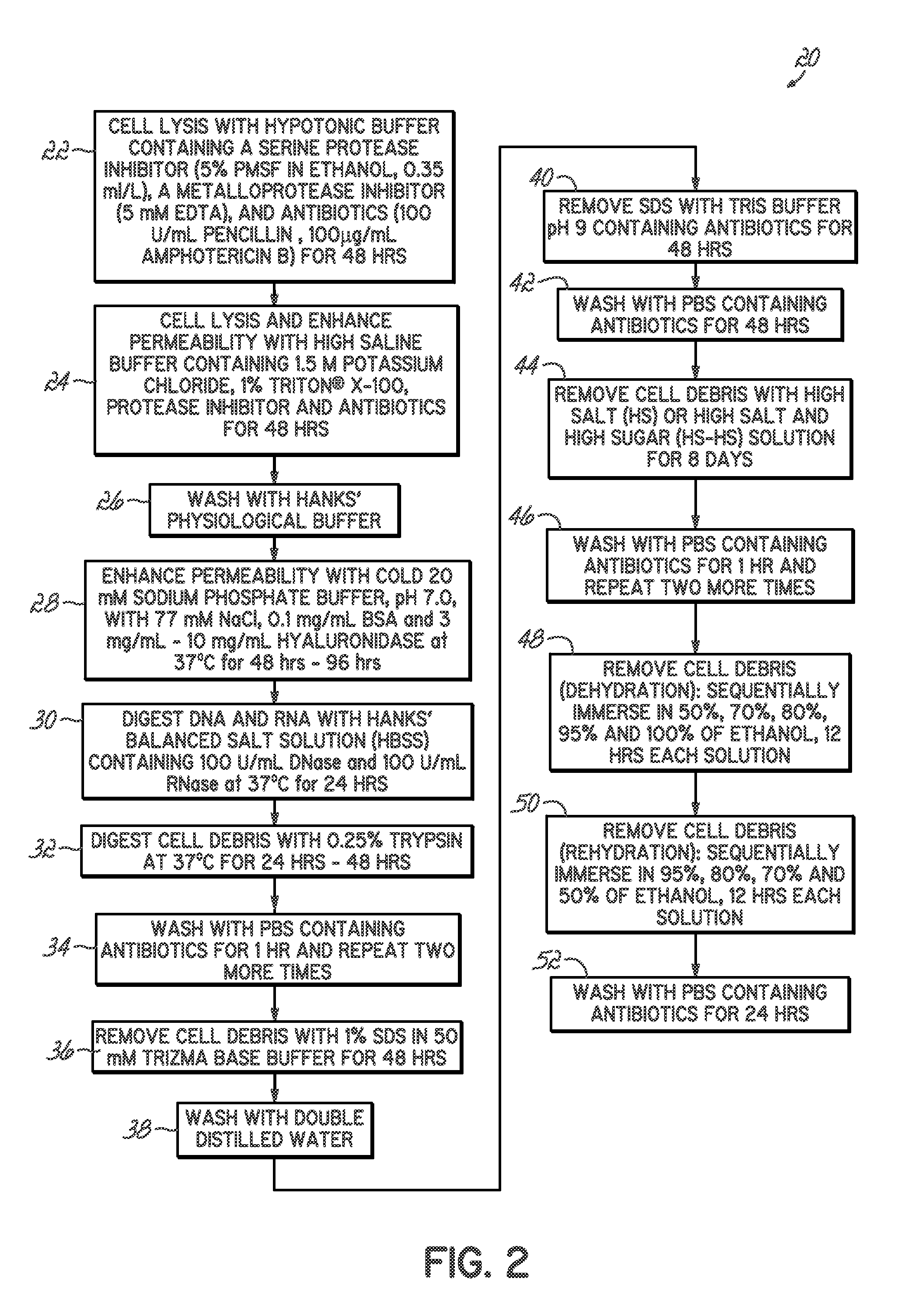Tissue processing for nonimmunogenic implants
a non-immunogenic, tissue technology, applied in the field of non-immunogenic implants, can solve the problems of difficult to obtain such tissue, delay in treatment, limited supply of allografts, etc., and achieve the effect of enhancing the permeability of the extracellular matrix
- Summary
- Abstract
- Description
- Claims
- Application Information
AI Technical Summary
Benefits of technology
Problems solved by technology
Method used
Image
Examples
example
[0042]The general method steps (10) used in the Example are shown in FIG. 1. The tissue sample was treated to lyse cells (12), enhance permeability of extracellular matrix (14), degrade cell debris (16), and remove cell debris (18). A detailed flowchart (20) of the Example is shown in FIG. 2. Menisci obtained by dissection from 6-8 months old wild type pig hind limb were processed as described below. Unless otherwise specified, all steps were conducted at room temperature (about 20° C. to about 25° C.) with agitation at 120 rpm on an orbital mixer. Tissues were immersed in solutions at a concentration in the range from about 150 mg / ml to about 200 mg / ml.
[0043]Menisci (3.5 cm in length and 2.5 cm in width) were immersed in hypotonic 10 mM Tris buffer containing final concentrations of 0.35 ml / L phenylmethylsulfonylfluoride (PMSF) made from 5% PMSF in ethanol, 5 mM EDTA, 5 ml / L metalloprotease inhibitor, 100 U / ml penicillin / 100 μg / ml streptomycin / 0.25 μg / ml amphotericin B for 48 hours...
PUM
| Property | Measurement | Unit |
|---|---|---|
| concentration | aaaaa | aaaaa |
| concentration | aaaaa | aaaaa |
| temperature | aaaaa | aaaaa |
Abstract
Description
Claims
Application Information
 Login to View More
Login to View More - R&D
- Intellectual Property
- Life Sciences
- Materials
- Tech Scout
- Unparalleled Data Quality
- Higher Quality Content
- 60% Fewer Hallucinations
Browse by: Latest US Patents, China's latest patents, Technical Efficacy Thesaurus, Application Domain, Technology Topic, Popular Technical Reports.
© 2025 PatSnap. All rights reserved.Legal|Privacy policy|Modern Slavery Act Transparency Statement|Sitemap|About US| Contact US: help@patsnap.com



